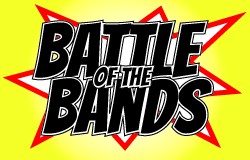Baltimore Sports History: Satchel Paige
February 22nd, 2024 by The Professor
 by Andrew Ciofalo, host of After The Whistle
by Andrew Ciofalo, host of After The Whistle
In celebration of Black History Month this year, I’d like to look back at the history of Negro League Baseball in Baltimore and some of the stars that helped break the color barrier to the MLB alongside of Jackie Robinson.
In celebration of Black History Month this year, I’d like to look back at the history of Negro League Baseball in Baltimore and some of the stars that helped break the color barrier to the MLB alongside of Jackie Robinson.
Whenever Negro League Baseball comes into conversation, not far behind is the name Leroy “Satchel” Paige. After all, the right-handed pitcher might be the greatest player to ever play in the Negro Leagues. Satchel Paige played in the Negro Leagues for 20 years before he got a chance to play in the Major Leagues. His stats will vary depending on the source, but his story goes much deeper than just the numbers.
Paige’s introduction to baseball was not the common way you might normally think of. At the age of 12 he was sentenced to 5 years in a juvenile reform school in Alabama for petty theft. He was taught to pitch by employees of the school. After he was realized shortly before his 18th birthday, he joined the Mobile Tigers, a semi-pro team based in Mobile, Alabama. He famously said “I traded five years of freedom to learn how to pitch” after serving his sentence. He also has said that his time helped him become a real man.
Paige signed a contract to play for the Minor league Chattanooga White Sox in 1926, where he would soon get the attention of local papers. From there, his contract would be sold to the Birmingham Black Barons and played his first season of Negro League Baseball in 1927. At just 20 years old, he started 10 games resulting in a 7-2 record to the tune of a 2.39 ERA over 98 innings pitched.
Because of his talent and ability, Paige would draw massive crowds for teams. Barons owner R. T. Jackson used this to his advantage and would “rent” Paige to other ball clubs. In 1930, Satchel Paige would be leased to the Baltimore Black Sox, where he would play from spring to midsummer producing a 3-1 record. He then went back to Birmingham to finish out his final season for the Black Barons. His next stint longer than a year with a team was with the Pittsburgh Crawfords, where he played for 3 seasons. He earned All-Star status in each of these 3 seasons with the team. His best year playing for the Crawfords was in 1934, ending the year with a 13-3 record and a 1.54 ERA. He also bounced around teams from 1940 to 1943, playing for the Kansas City Monarchs, New York Black Yankees, and Memphis Red Sox until finally joining the Monarchs again in 1944. Despite all of the back and forth, he earned another 3 All-Star game selections.
For the last 4 years of his Negro League career, Paige played for the Kansas City Monarchs till his age 40 season in 1947. Paige had dominated Negro League Baseball for 20 years before Jackie Robinson broke the color barrier for Major League Baseball and it was only then did Satchel Paige get his chance to show the whole country who he was. Paige would pitch for the Cleveland Indians for 2 years and the St. Louis Browns for 3 years. His final 2 years he would get 2 more All-Star game selections, he was 45 and 46 for those seasons. He later became the oldest player to ever play in the major leagues when he threw 3 shut-out innings in a game for the Kansas City Athletics when he was 59 years young. Paige was a “baseball for life” kind of man. He even tried playing 3 years after his appearance for the Athletics.
Satchel Paige is an icon of baseball, and his 1971 Hall of Fame induction solidified him into the baseball record books. As I’ve said before, stats for Negro League players are sparse, but if you asked Paige, he’d tell you he won almost 2,000 games. All though his stats can be debated, what’s not debatable are his 8 All-Star Selections and 2 World Series rings and will never be taken away.
* All stats will come from Baseball-Reference.com but it is important to mention that every source will vary due to the quality of stat tracking in the Negro Leagues.












